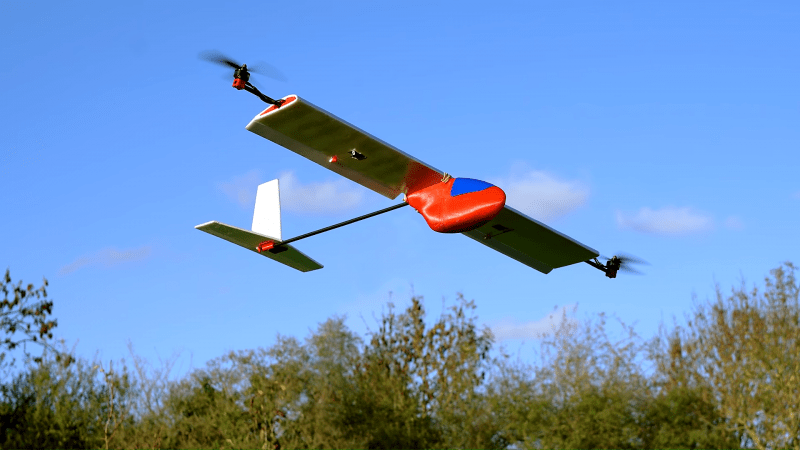Part of the charm of quadcopters is the challenge that building and flying them presents. In need of complex sensors and computational power to just get off the ground and under tremendous stresses thanks to their massively powerful motors, they often seem only barely controlled in flight. Despite these challenges, quadcopter flight has been reduced to practice in many ways, leaving hobbyists in search of another challenge.
[Tom Stanton] is scratching his creative itch with this radio-controlled tilt-rotor airplane that presents some unique problems and opportunities. Tilt-rotor planes are, as the name implies, able to swivel their propellors and transition them from providing forward thrust to providing verticle lift. With the rotors providing lift, the aircraft is able to hover and perform vertical take-off and landing (VTOL); switched to thrust mode, wings provide the lift for horizontal flight.
[Tom]’s realization of this design seems simple – a spar running through the wing holding BLDC motors and props is swiveled through 90° by a servo to transition the aircraft. Standard control surfaces on the wings and tail take care of horizontal flight. Actually getting an off-the-shelf flight controller to deal with the transitions was tricky. [Tom] ended up adding an Arduino to intercept the PWM signals the flight controller normally sends directly to the servos and speed controls to provide the coordination needed for a smooth transition. Full details in the video below, and some test flights which show that an RC VTOL is anything but a beginner’s plane.
[Tom] is proving himself to be quite the Renaissance man these days. Between air-powered piston engines, over-balance trebuchets, and popping the perfect wheelie, he seems to have covered all the bases and done his best to keep our tip line stocked.
And [baldpower] is no tip-line slouch either.
















https://youtu.be/ktcWGpBBqEQ
Great stuff. I’m interested that there is *any* tilt authority from the elevator in the hover – have you flown it without a headwind? During the video my mind wandered to ideas of a small rotatable tail rotor to provide mixed tilt/yaw at zero airspeed.
I believe that as soon as you start the transition to horizontal flight the elevators and rudder become effective. Very little at first, then more as forward speed increases. Watch the “Air Warriors” show on the Osprey. It doesn’t go very high before starting the transition. Also the Osprey have a very sofisticated flight control system.
That is the rub here. The elevators and rudder do not “become effective”, more like they become increasingly more effective as forward speed increases. During the transition, you are effectively mixing from a dual rotor helicopter control system to an airplane. It would seem that you need a heli and a plane flight controller and then a very complex system of mixing the outputs of both controllers in some intelligent manner based on the percentage of transition. In an RC model I would think that making the transition very quickly minimizes the time you are in the most complex flight regime.
Check the DHL solution:
https://www.youtube.com/watch?v=WkYKjAugJ0c
Very cool design
He didn’t make the fuselage big enough to hold a rudder servo, but had to put 15 grams of weight on the tail to balance it.
So why didn’t he 3D print a bracket to attach a rudder servo somewhere on the tail boom for balance and get rudder control too?